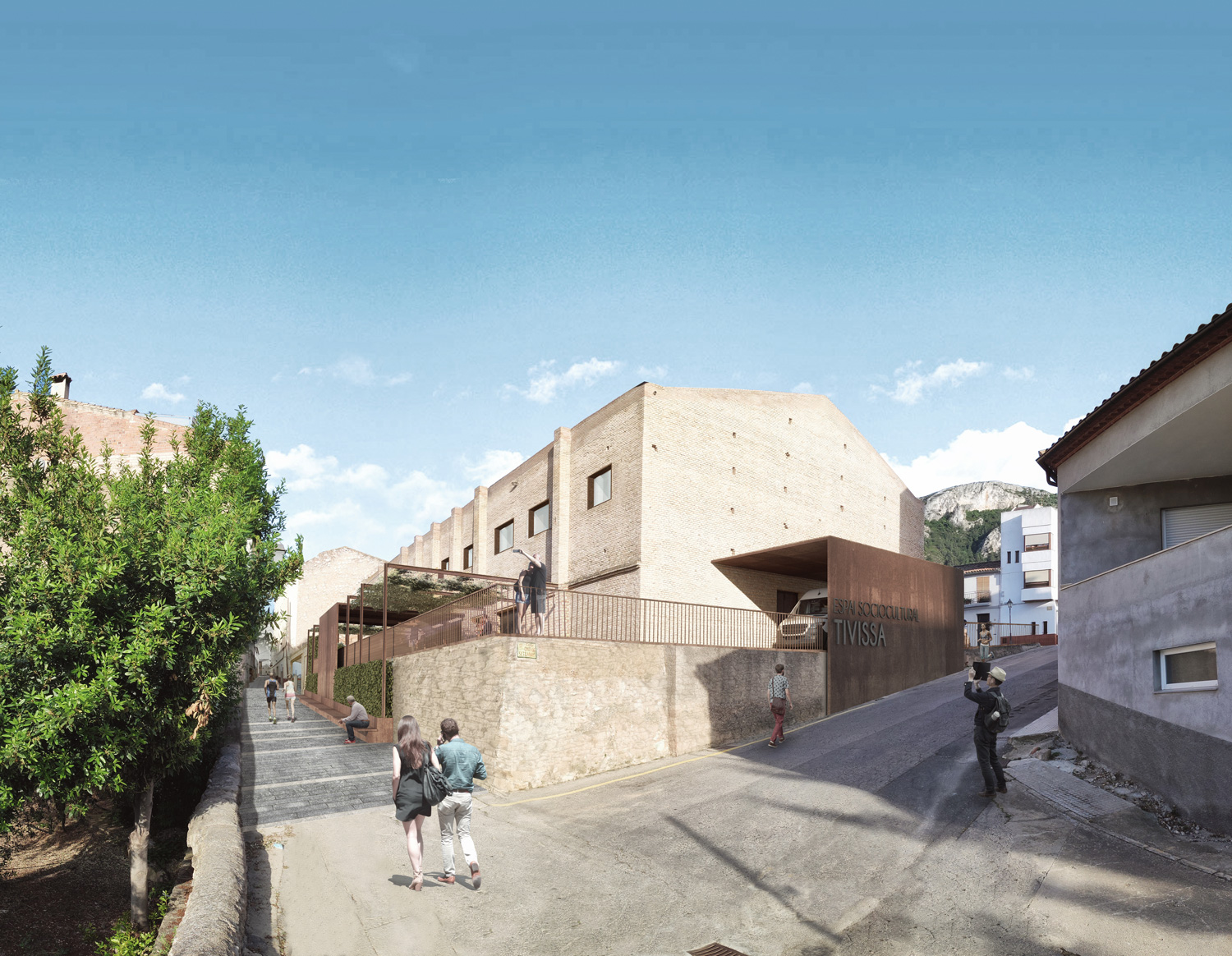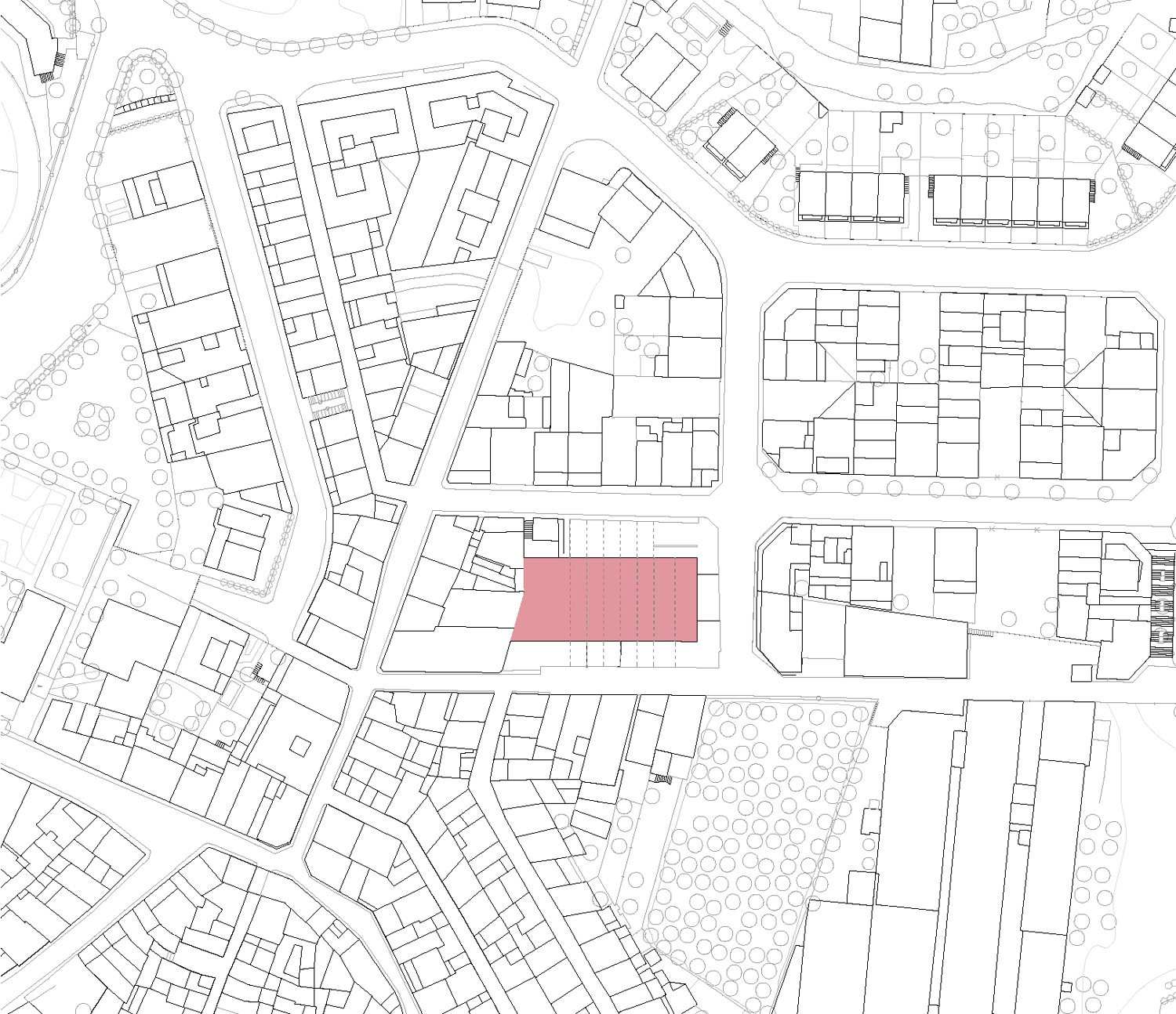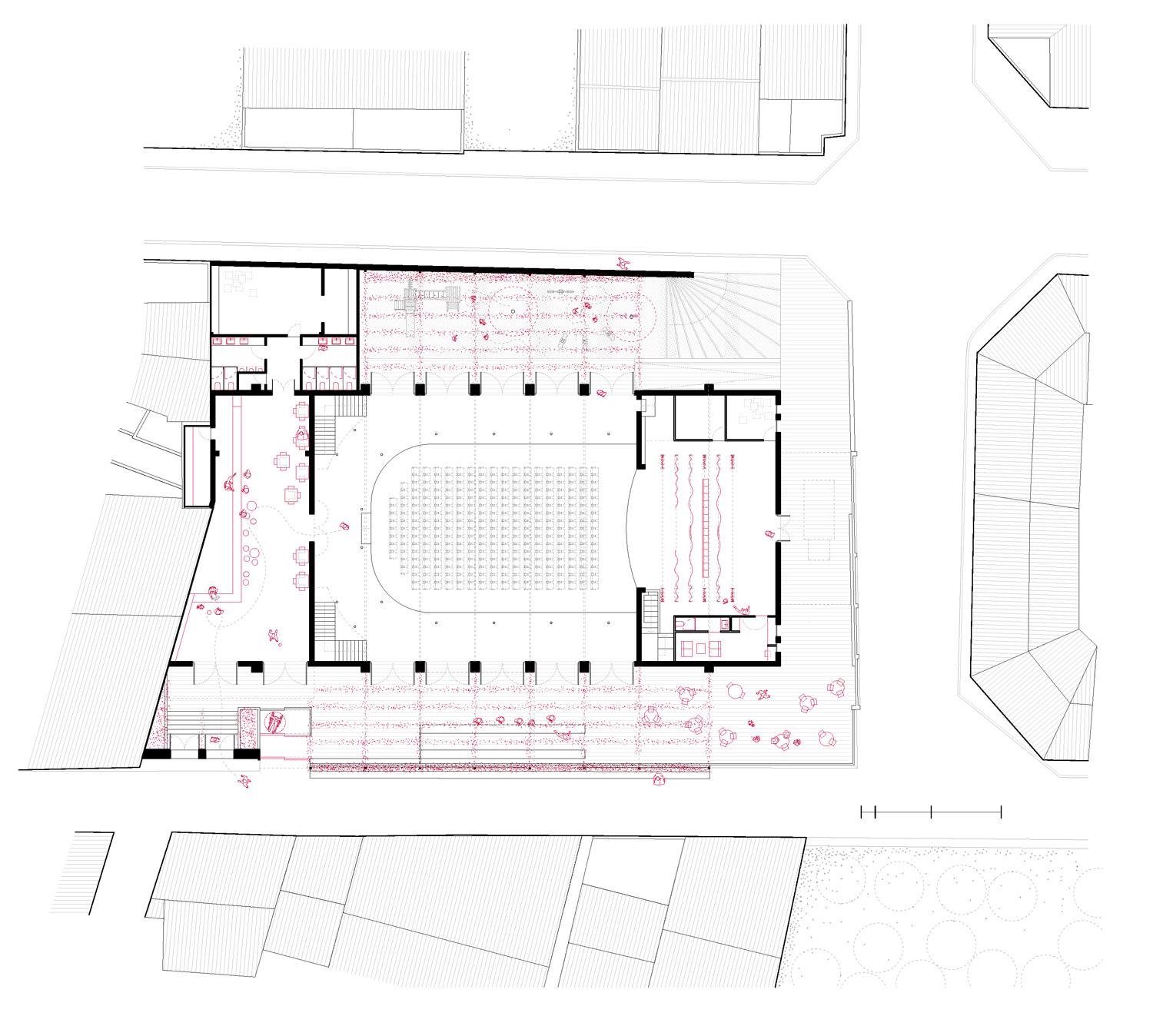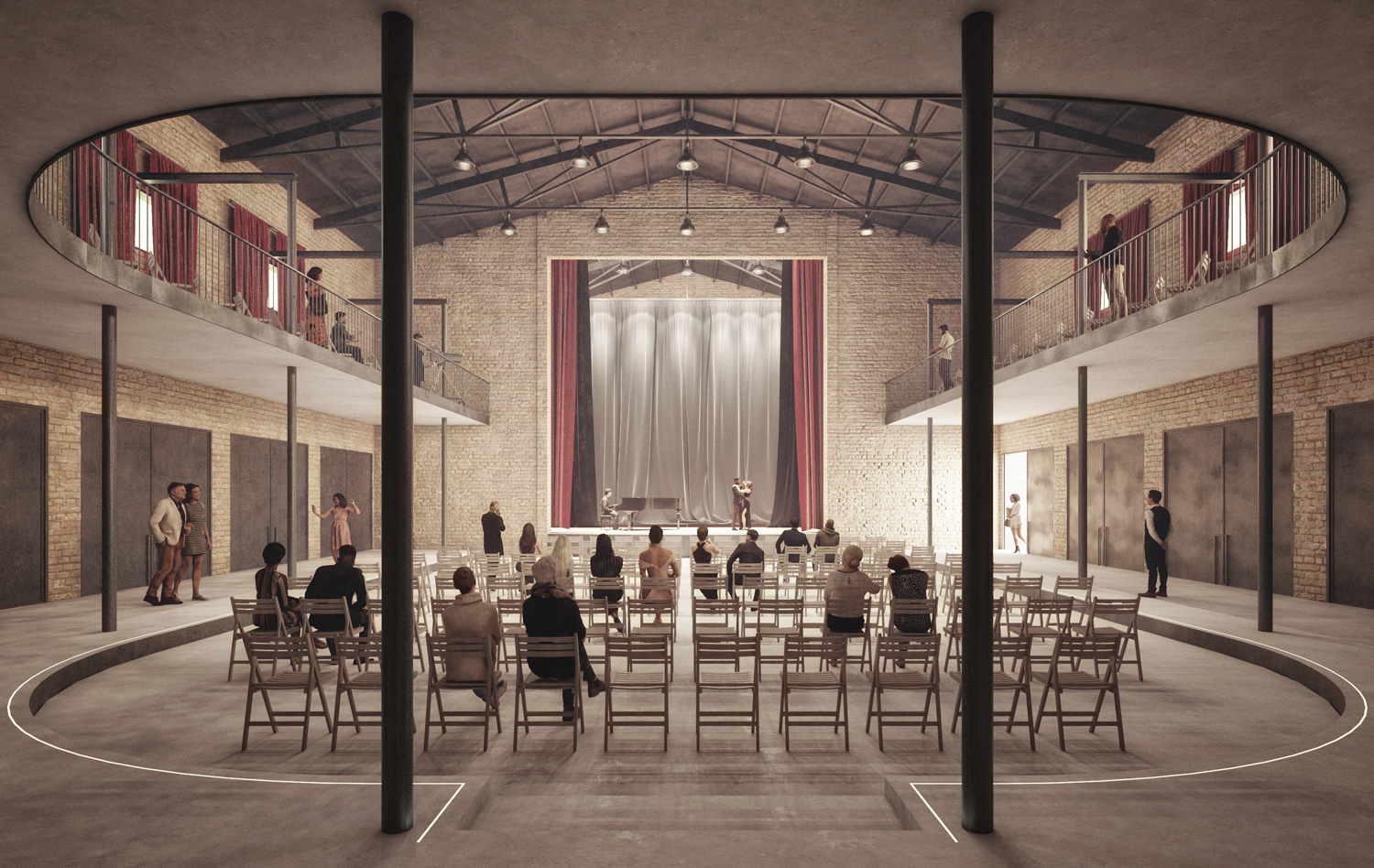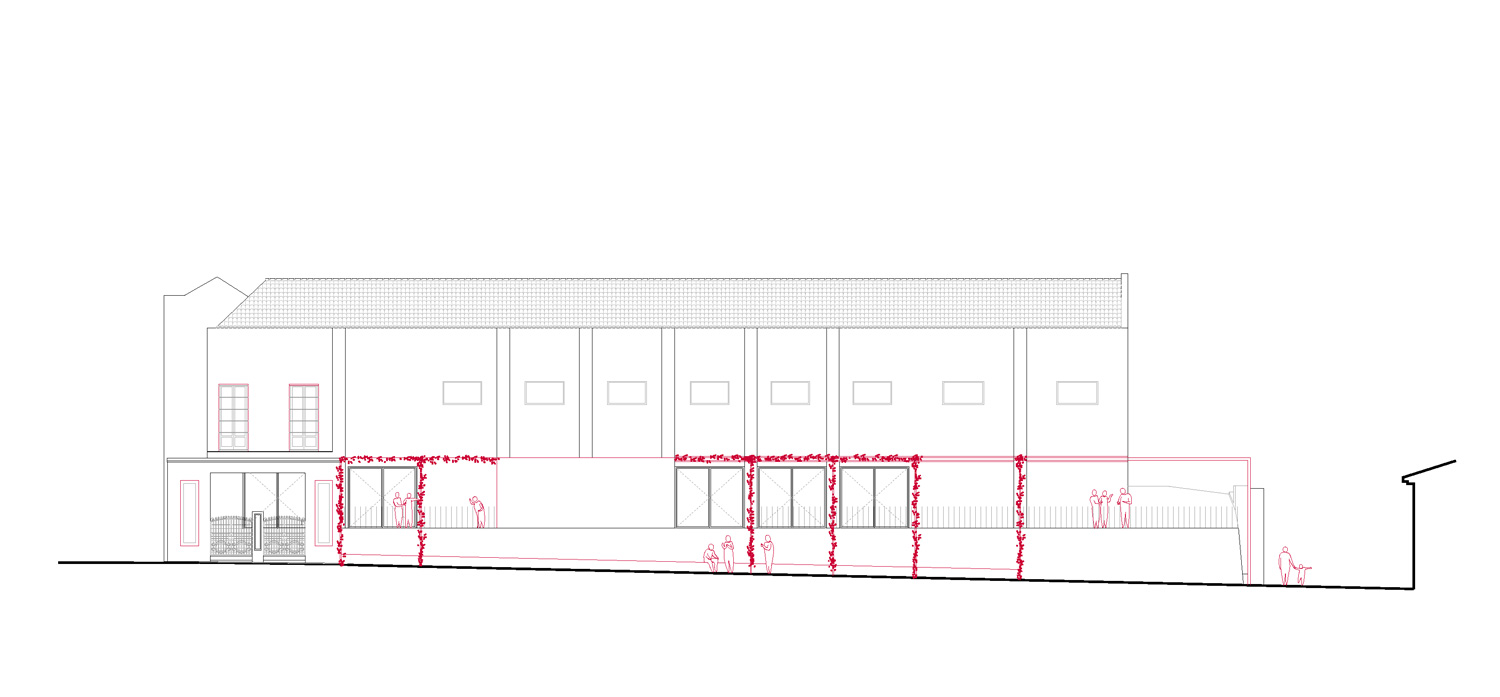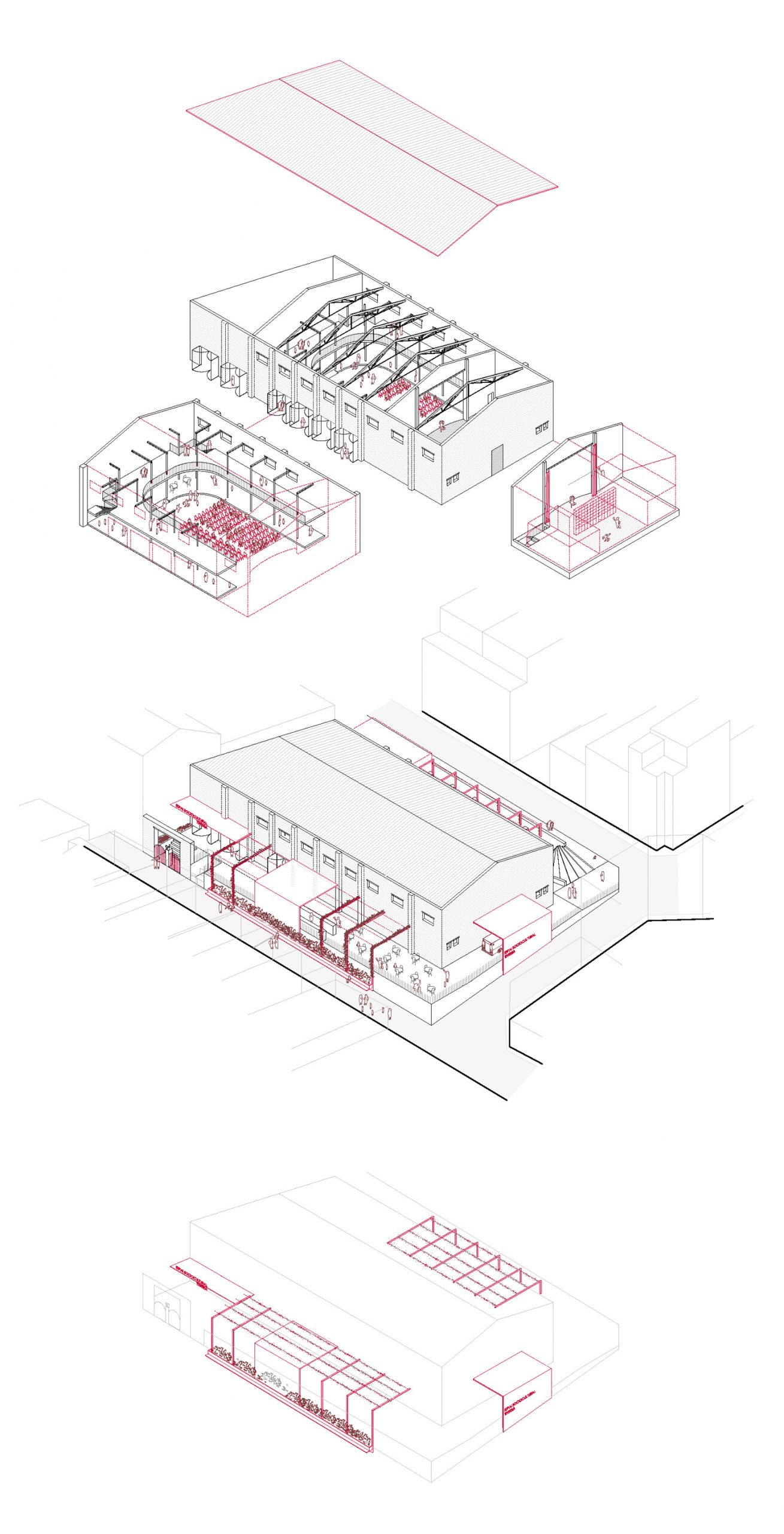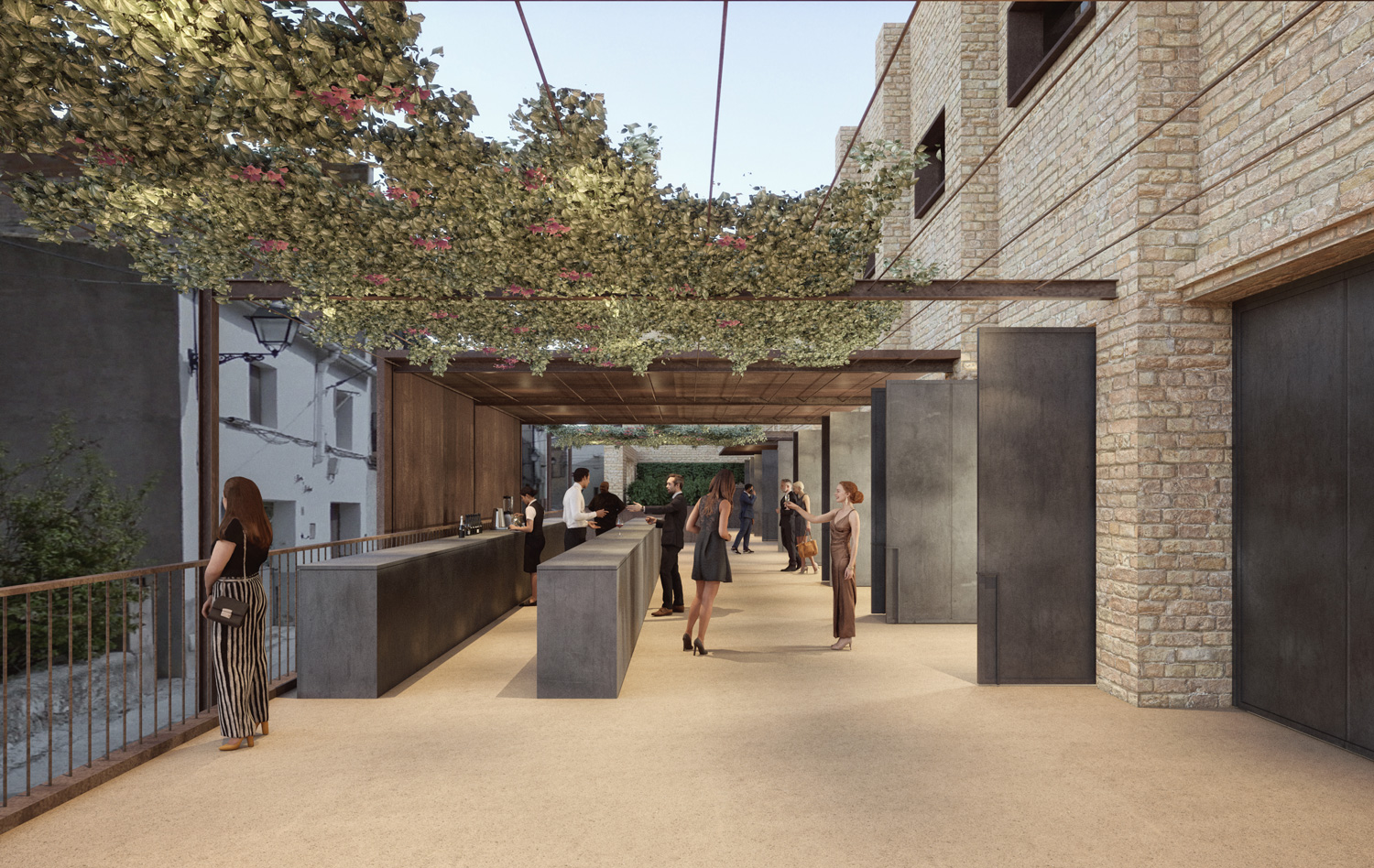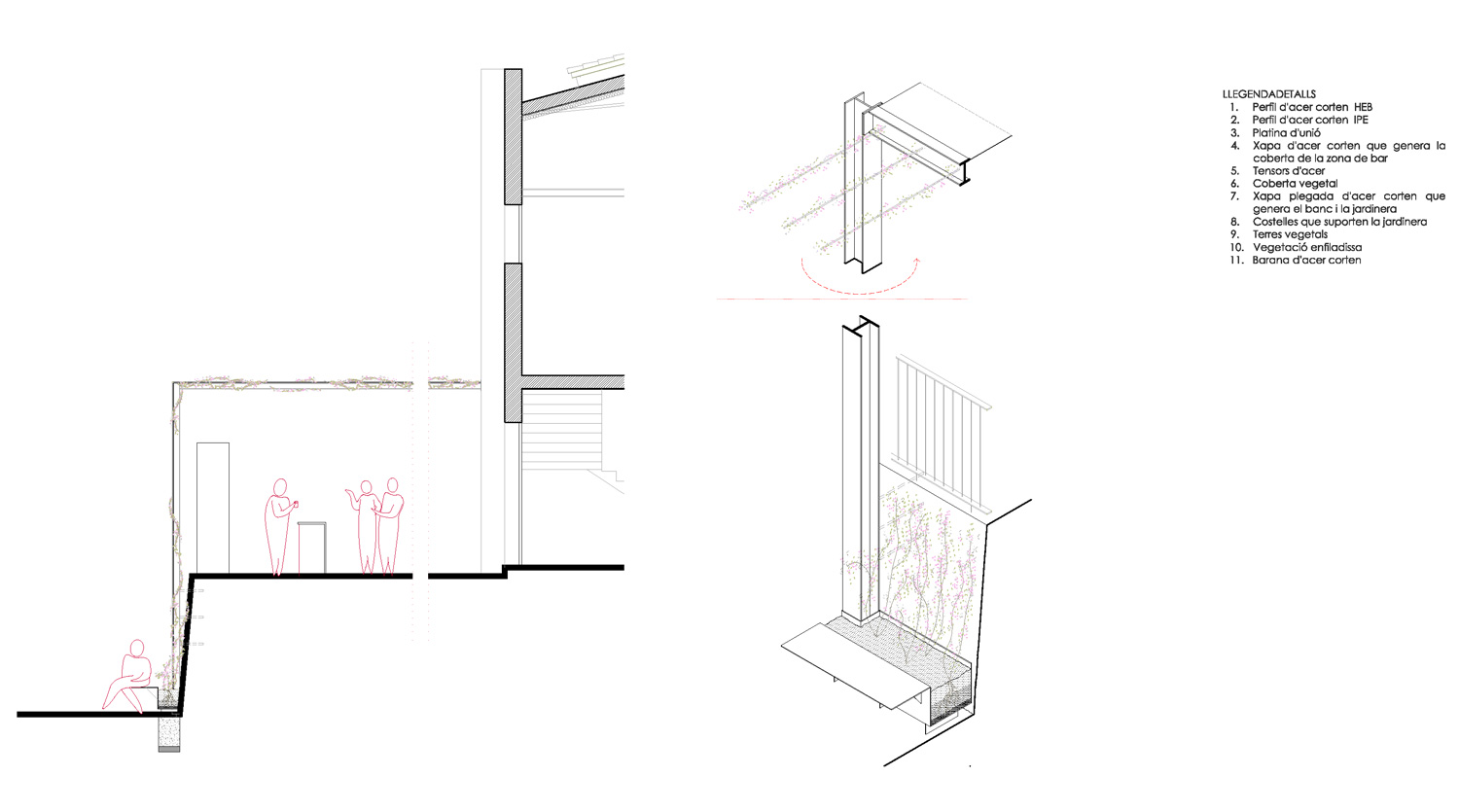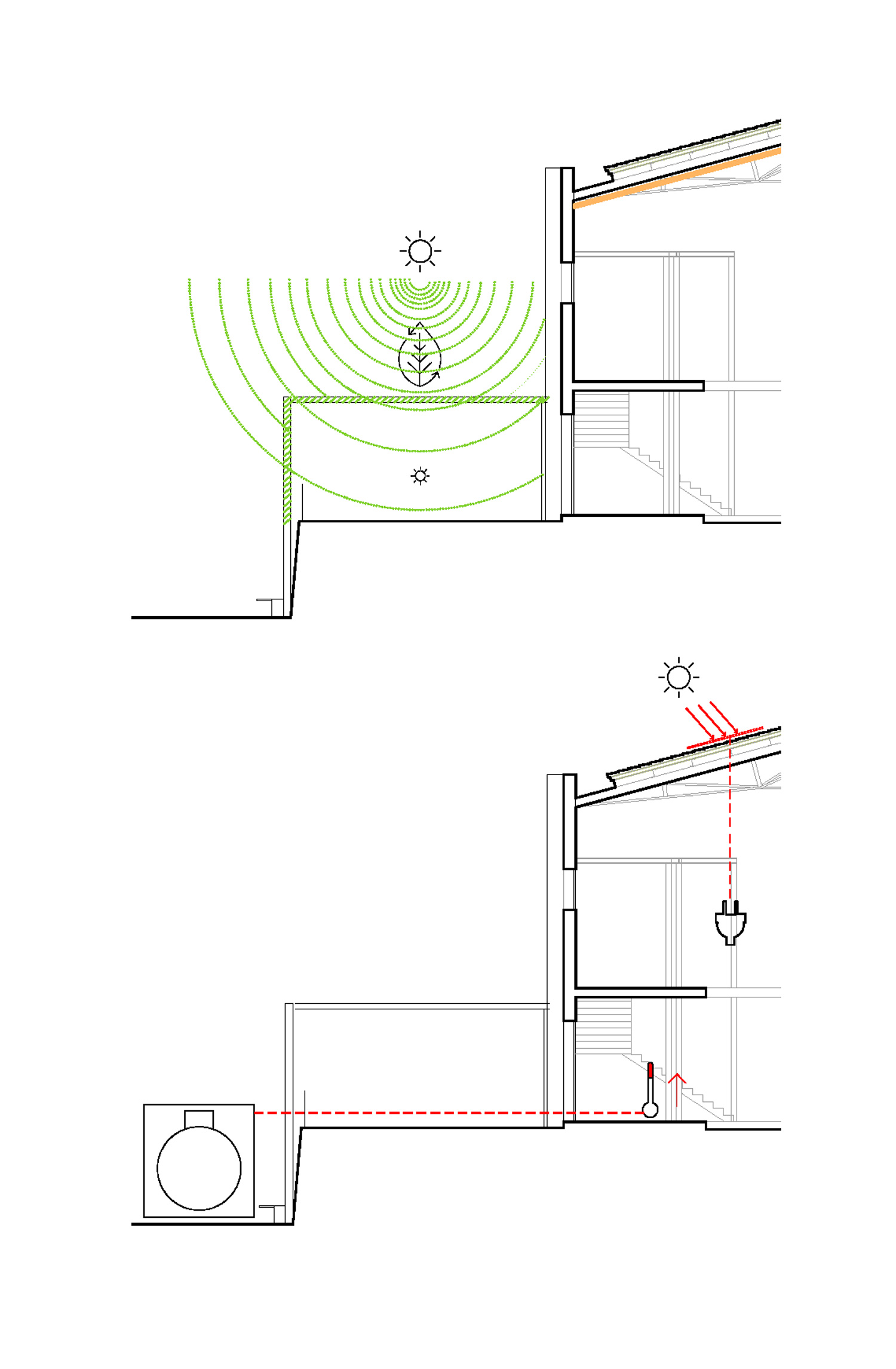3038-217-ES-2022
Client: Unknown
Status: Competition (2022)
Clasification: Finalist
Location: Tivissa, Spain
Coordinates: 41.040675, 0.732028
Climate: Mediterranean, Temperate
Materials: Brick, Metal, Vegetal
Environment: Old town
Visualizer: Studio
Scale: 1.500 ㎡ Medium
Types: Cultural, Cultural center, Refurbishment
Aware of the context of the proposal and the entity and historical importance of the building on which intervention will take place, an action resulting from a direct reading of the relationship of the building with the immediate urban environment is proposed. As a consequence and the lack of dialogue between the building and the environment, the will to link this environment with the building, functionally and aesthetically, is taken as a plot line, creating a new skin, which will be a plinth that is directly related to the town.
This new façade will be transformed to solve the different accesses to the building, pedestrian, adapted or road. Responding to the different aspects of accessibility and maintaining its original aesthetics, to ensure its proximity to the consolidated fabric, and the correct natural circulation of the users. At all times special attention is paid to respect for the building and the existing environment. The original volume and materiality are maintained, incorporating only a few rib elements, which further mark and emphasize the porticoed rhythm of the original structure. Consequently, the general height is taken as the one that determines the entrance arch, together with the cornices that appear on the façade.
Inside, the original interior envelope is also maintained. Only consolidating and sophisticated, when necessary, the existing materials to value the history of the building and its evolution, thus achieving an austere image. On the other hand, the use of other materials is reserved for those spaces in which it is strictly necessary to generate well-being and comfort for users.
With the use of cortan steel as the only material, the aim is to enhance the relationship between the outdoor spaces, emulating the chromatics of the town’s surroundings and playing with earthy textures and colours. This material is combined with the existing materials, appearing only in singular points, such as the accesses, the structure itself or the umbracle. Constructively, the existing building is of a simple typology, both in vertical tancaments and in roof. It is for this reason that, given the orientation of the building, it is thought about the incorporation of some elements of lleugers side cover, in order to incorporate deciduous plant elements.
In summer, this element will act as solar protection from excessive radiation and, in winter, will allow the solar vents to enter the interior of the ground floor facing south, on which the openings have been modified to favor this relationship and cause the ventilation created naturally. Internally, the general functionality of the building has been a very relevant point when it comes to defining the uses, relating it to the different points of access and establishing a hierarchy. It presents a simple and clear distribution that allows these countries to function jointly or independently depending on the needs of the moment.
It seeks a direct relationship between the use of the building itself and that of its adjacent spaces and thus avoid crowded circulations, create server spaces and service spaces, favor permeability and versatility, and thus ensure that the user continues to participate in All the uses that it can arrive to during a term without interference. In addition, it is to always promote a gradient of privacy that from the access of the general public to loading dock will filter and organize the flow.
At all times the program pursues to achieve the optimization and versatility of the spaces, always having the ability to adapt to all possible uses and scenarios, both for example, provoking the versatility of the space of Foyer on a large central bar that can be used for various uses (such as for the sale of tickets, bar counter, sale of merchandise or control of the cloakroom) or the non-colonization of the central space of the room with a fixed furniture, i think with a of punctual, allows its assembly and disassembly according to the demand activity.
It proposes a dry, fast and economical construction system, which strengthens the idea of rhythm and repetition, generating modulation and insisting on its industrial character. Quant to the perimeter wall of tancament, it is thought of the adhesion of metal structural elements that will make up the different spaces/uses specified and the matt weather acting with the reinforcement of the existing stone wall.
In contact with the street level, this mateix element is transformed, rotated and created a planter-bench that accompanies the main access and generates a new urban area of the plaza. As for the porticoed structure of the façade, the rib system will also provoke a structural and spatial rhythm that will give meaning to the interior-exterior relations and will adapt to the orientation with an pergola led by metal tensors, which will That the performance is understood as a single coherent and indivisible unit, which encompasses both respects the historic building.
All the materials are planted easily, but above all the main one, the steel cut, which is the one that generates the wrapping, perfectly admits the natural weathering over time, and both have a long useful life. The natural forest, combined with the existing materials such as for the ceramic work and the stone, will form part of a whole mateix. It should also be noted that all the proposed constructive solutions present some constructive, installation, and maintenance characteristics, which can be carried out by nearby industrialists and professionals, without depending on large infrastructures, encouraging economic activity and circulation of the term.
